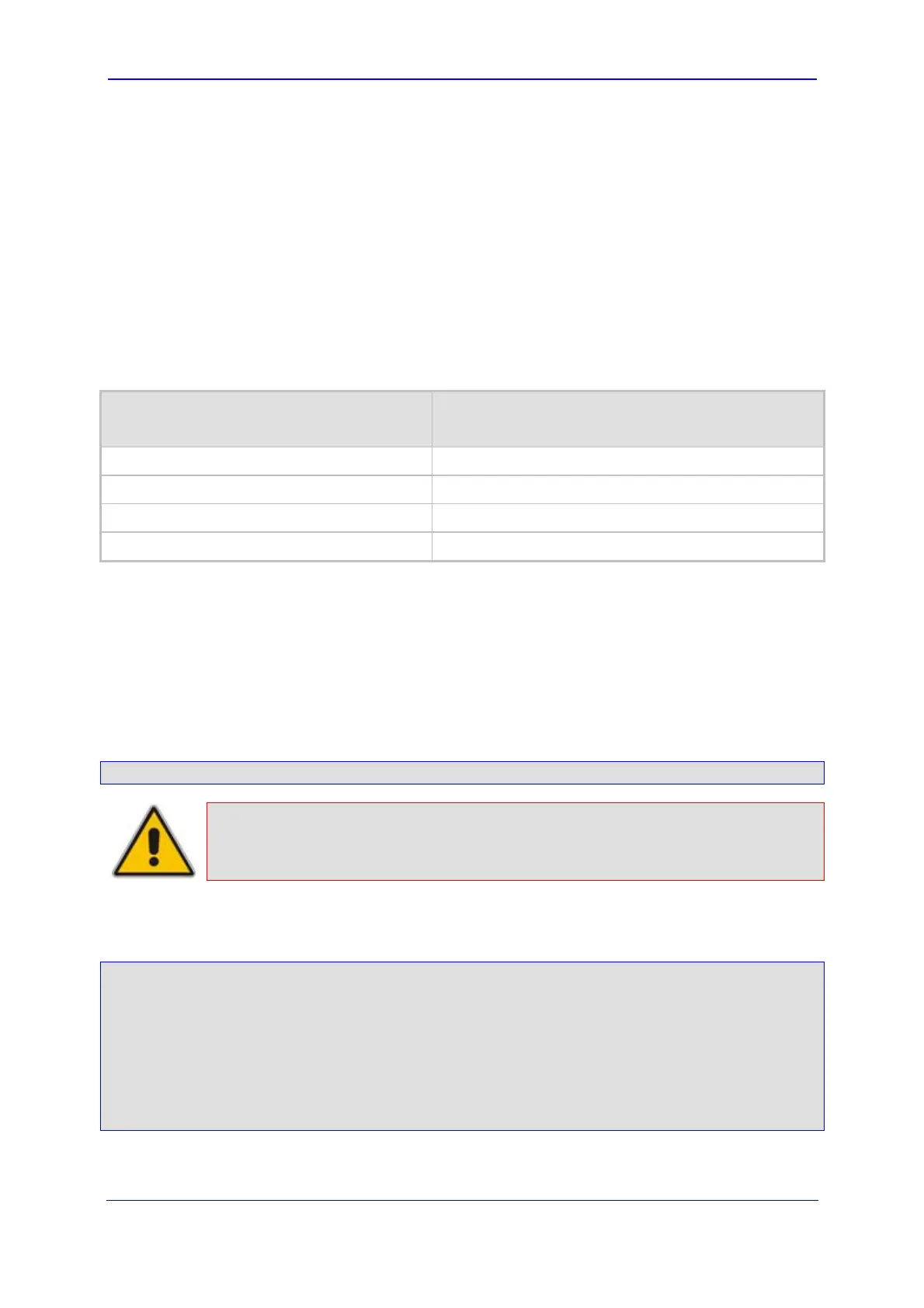Version 5.8 489 October 2009
SIP User's Manual 9. IP Telephony Capabilities
Where:
Line = as configured in the Endpoint Phone Number Table.
SipGtw = configured using the SIPGatewayName parameter.
From header/user part = calling party number as received from the MF spill.
The ANI and the pseudo-ANI numbers are sent to the PSAP either in the From and/or P-
AssertedID SIP header.
Typically, the MF spills are sent from the E911 tandem switch to the PSAP, as shown in the
table below:
Table 9-4: Dialed MF Digits Sent to PSAP
Digits of Calling Number Dialed MF Digits
8 digits "nnnnnnnn" (ANI) "KPnnnnnnnnST"
12 digits "nnnnnnnnnnnn" (ANI) "KPnnnnnnnnnnnnSTP"
12 digits ANI and 10 digits PANI "KPnnnnnnnnnnnnSTKPmmmmmmmmmmST"
two digits "nn" "KPnnSTP"
The MF KP, ST, and STP digits are mapped as follows:
* for KP
# for ST
B for STP
For example, if ANI and PANI are received, the SIP INVITE contains the following From
header:
From: <sip:*nnnnnnnnnnnn#*mmmmmmmmmm#@10.2.3.4>;tag=1c14
Note: It is possible to remove the * and # characters, using the device's number
manipulation rules.
If the device receives the SIP INFO message below, it then generates a "hookflash" mid-
call Wink signal:
INFO sip:4505656002@192.168.13.40:5060 SIP/2.0
Via: SIP/2.0/UDP 192.168.13.2:5060
From: port1vega1 <sip:06@192.168.13.2:5060>
To: <sip:4505656002@192.168.13.40:5060>;tag=132878796-
1040067870294
Call-ID: 0010-0016-D69A7DA8-1@192.168.13.2
CSeq:2 INFO
Content-Type: application/broadsoft
Content-Length: 17
event flashhook

